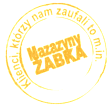UDT course for maintenance of stationary, suspended and mast mobile platforms
Maintenance training for stationary, suspended and masted mobile platforms
You are cordially invited to a training course preparing you for work as a maintenance technician of stationary, suspended and masted mobile platforms. With us, you will gain a new qualification awarded by the UDT, thanks to which you will learn a new profession.
Due to the increasing use of mobile platforms (including aerial work platforms and scissor lifts) in many industries, there is now a high demand for professionals who can perform maintenance work to the highest standard.
With us, you will easily pass the state exam and gain new qualifications.
Lifting platforms are classified as material handling equipment and are therefore subject to technical supervision by the Office of Technical Inspection. As a result, their maintenance, inspection and repair cannot be carried out by unqualified people, but only by those who are authorised by the Office of Technical Inspection. We have developed this course for people who want to become maintenance technicians.
Post-course work
Organised by our ERGON Centre for Staff Improvement The training is aimed at people who want to find employment in positions such as:
- aerial work platform maintainer,
- installer of various equipment at height,
- employee of advertising companies,
- employee of construction companies.
Topics covered on the course
- general information about mobile platforms,
- technical documentation of the equipment,
- discussion of operating instructions,
- marking of landings,
- capacity characteristics of the equipment,
- term stability of platforms,
- knowledge of technical supervision,
- construction and operation of the electrical component,
- construction and operation of the hydraulic system,
- construction and operation of the mechanical and pneumatic components,
- the oils and lubricants used,
- safety apparatus and devices,
- devices for controlling mobile platforms,
- rules for the operation and cleaning of platforms,
- organisation of own work,
- the most common malfunctions during operation,
- information on health, safety and fire safety,
- rules for the safe use of mobile platforms,
- drive mechanisms,
- methods for ensuring that platforms are in good working order,
- conservationist duties,
- actions to be taken in the event of equipment failure,
- keeping an operating and maintenance book.
Components of the training
The course programme has been structured to impart a maximum of theoretical and practical knowledge, so the training consists of:
- theoretical classes,
- practical activities.
Course price also includes training materials that each participant will receive.
Issued documents
After completing the course and passing the examination, the trainee receives a qualification certificate issued by the Office of Technical Inspection. This is a document which entitles them to carry out maintenance work on such Lifting Equipment as stationary, suspended and masted mobile platforms. The UDT qualification obtained is recognised throughout the European Union and is valid for 5 years.
Location of training
We provide training at our training centres, located in locations such as:
- Warsaw,
- Bielsko-Biała,
- Katowice,
- Kraków,
- Gdansk,
- Kielce,
- Poznań,
- Gdynia,
- Bydgoszcz,
- Szczecin.
In addition, upon the employer's request, we can organise training at the principal's company located anywhere in Poland.
Conditions of participation
- coming of age,
- at least a basic education,
- a medical certificate issued by an occupational physician stating that there are no contraindications to performing the duties of the job.
Terms of reference
The UDT authorisation for the maintenance of stationary, suspended and masted mobile platforms allows maintenance work to be carried out on all equipment belonging to this group, regardless of brand. Well-known manufacturers of this equipment include:
- Alp-Lift;
- Bocker;
- Lionlift;
- Omme;
- Snorkel;
- Steinweg;
- Aerial;
- Aichi;
- Basket;
- Bison;
- Bizzocchi;
- Bronto;
- BST;
- Cella;
- CTE;
- Custers;
- Bottoms;
- Dino Lift;
- Euro Access;
- Eurozoom;
- Paus;
- Elevateur;
- Genie;
- Grove;
- GSL;
- GSR;
- Haulotte;
- Holland lift;
- Hunter;
- Isoli;
- Italmec;
- Iteco;
- JLG;
- Manitou;
- Marklift;
- Maxlift;
- MEC;
- Moog;
- Niftylift;
- Oil & Steel;
- Pagliero Multitel;
- Palazzani;
- RAM;
- Riffaud;
- Ruthmann;
- Simon;
- Sky High;
- Skyjack;
- Tecchio;
- Terex;
- Teupen;
- TKD;
- Topper;
- Toucan;
- UpRight;
- Versalift;
- Weber;
- Wumag.
Fixed, suspended and mast-mounted access platforms - brief characteristics
All mobile lifts (also known as stepladders) are cranes used to move people and loads to a specific workstation, which is located at height. They are made up of a platform (otherwise known as a basket or gondola) that is raised on a hoist or suspended from a linkage.
Stationary mobile platform
Its design consists of:
- chassis,
- working platform,
- telescopic boom or scissor lift.
Its distinctive feature is that it is permanently installed or for an extended period in one place. There is no possibility of movement. It can be used instead of scaffolding for work on the facade of buildings. It is often used for work carried out inside buildings, e.g. in warehouses, factory halls.
Suspended mobile platform
In the case of this type of mobile platform, the working platform (known as a basket) is suspended from special girders that are fixed to the roof of the building. This type of equipment is temporarily installed at specific points on the roof. It is only possible to change the position of the platform by raising or lowering on the cables; there is no possibility to otherwise control the position of the working platform. The main components of the structure are:
- work platform floor,
- running wheel of the work platform,
- platform balustrade,
- safety rope,
- supporting rope,
- bumper roll,
- grip braces,
- hanger,
- friction winch.
These types of cranes are helpful when cleaning windows, cleaning facades, insulating buildings, painting facades, carrying out inspection activities.
Mobile mast platform
Its design means that the working platform automatically moves along the mast. The mobile mast platform can be moved easily from place to place, as it has wheels. Its construction consists of the following components:
- mast in the case of single-mast mobile platforms or masts in the case of twin-mast mobile platforms,
- working platform,
- chassis,
- drive mechanism.
The mobile mast platform is used, among other things, for repair and construction work as well as in factory halls and high-bay warehouses.
Why take our course?
- we are flexible - we can travel to the client,
- is attractively priced,
- is in line with the UDT programme,
- we are a company that has been providing vocational courses for many years,
- we assist with all the formalities,
- the best work for us - we have an experienced training staff,
- we have a high exam pass rate.
Our other UDT courses
We also provide training in operation and maintenance, among other things:
- HDS cranes,
- tower cranes,
- forklift trucks,
- cranes.
If you have any further questions, welcome to contact us.
Questions and answers
Will I be able to repair all types of mobile platforms, regardless of brand, after training?
Yes. On the training course you will gain the skills to repair equipment from all manufacturers, including Teupen, TKD, Toucan, UpRight, Versalift, Weber, Wumag, Alp-Lift, Bocker, Lionlift, Omme, Snorkel, Steinweg, BST, Cella, CTE, Custers, Denka, Simon, Aerial.
Is there one course for all three types of mobile platforms?
We operate under UDT guidelines, so we do not have such a course. Each piece of equipment requires a separate maintenance training course.
What education do I need to have in order to join the course?
The minimum requirement is to have a primary education.


































